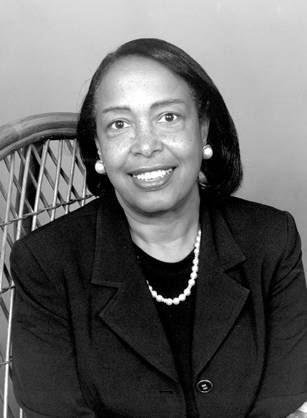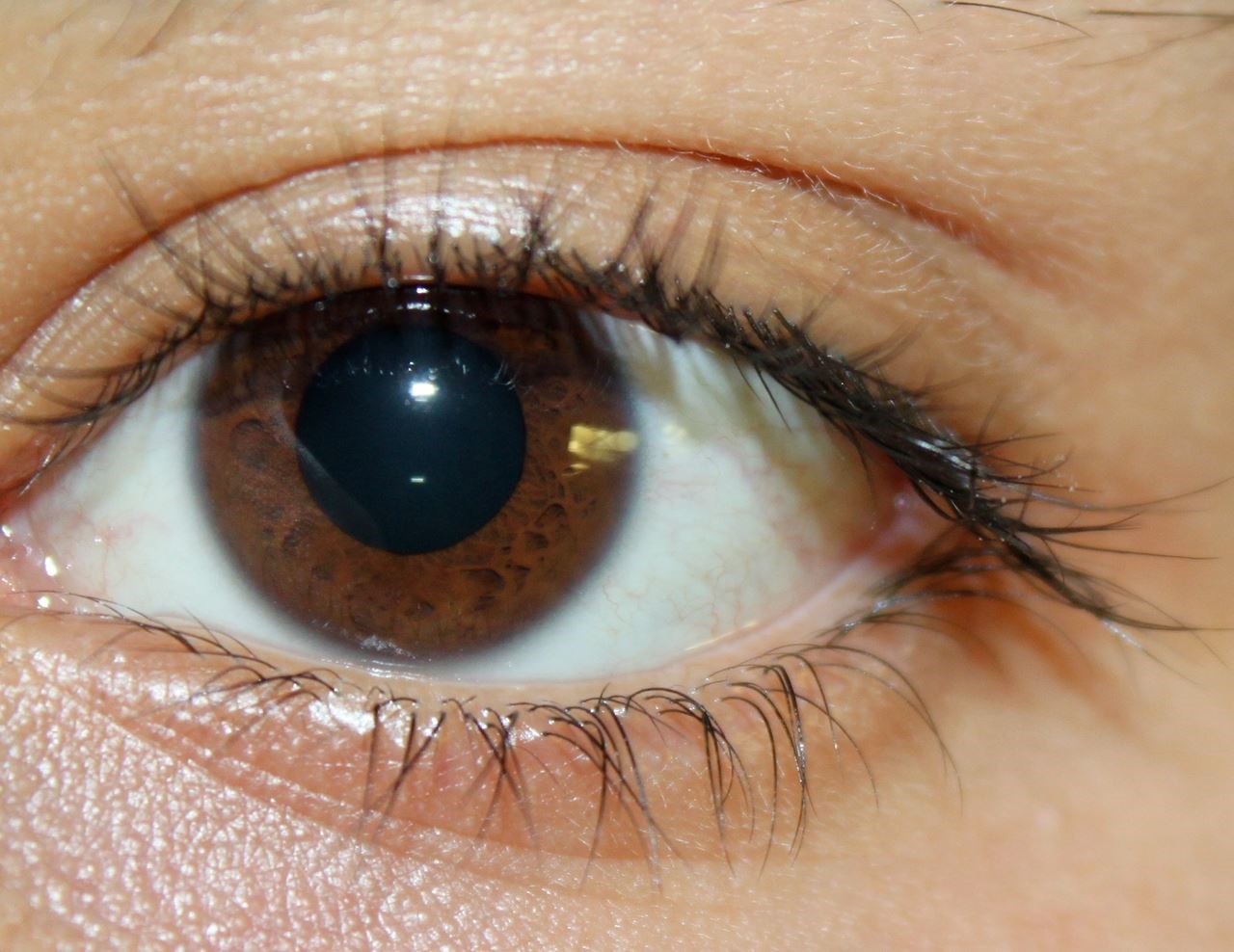“We need to take the obstacles and use them as challenges to stimulate us to not just be good, but to be the best’’
See the Early Reader Edition here: myhero.com/early-reader-dr-bath
Christopher Reeve once said, “A hero is an ordinary individual who finds the strength to persevere and endure in spite of overwhelming obstacles.” This quote perfectly displays how my hero, Dr. Patricia Bath overcame hardships to become an exceptional role model for everyone. Dr. Patricia Bath was born on November 4th, 1942 in a household that instilled a high value on education. Keeping her values in mind, she always was outstanding in school, and she always had a keen interest in science. At the age of sixteen, she worked with Dr. Robert Bernard, researching the growth rate of cancer cells (ABC News). Her love for science and passion for others led her to break society's gender and racial norms in the 1950s and ‘60s. She became the first African American woman to receive a patent for a medical invention involving cataract surgery. In addition to her successful career, she always remembered to take time out of her busy schedule to volunteer for the betterment of society. “On a humanitarian mission to North Africa, [...] she restored the sight of a woman who had been blind for thirty years”(Changing the face of medicine). A true hero must possess the ability to break negative stereotypes and an altruistic attitude by always putting others well being before their own. Dr. Bath’s endless selflessness and strength to defy stereotypes makes her an extraordinary role model, and hero; her actions excite other females to take interest in the field of science and inspire many to think about how to contribute to society.
 National Library of Medicine [Public domain]https://commons.wikimedia.org/wiki/File:Patriciabath.jpgDr. Bath’s selflessness toward humanity transformed the lives of many seeking to get their vision back. When she noticed people in her impoverished community of Harlem were not getting the ophthalmology care they needed just because of their social status she, “operate[d] on blind patients at Harlem Hospital's Eye Clinic free of charge and she volunteered her own time to work as an assistant surgeon” (Patricia E. Bath). While working grueling hours as a Resident, Dr. Bath sacrificed her few hours of rest to selflessly help others in need. She provided the lower class to receive an equal opportunity for ophthalmology care which gave her patients the best chance to see and the best chance at life. Dr. Bath exemplifies a true hero because of her selfless and giving attitude toward her patients. She showed how much she cared for the well being of her patients even more than her own. When Dr. Bath was asked what it was like being the first woman to receive her patent she said, “I wasn’t seeking to be first. I was just doing my thing, and I wanted to serve humanity” (Time). Dr. Bath was not trying to win a race “to be the first.” She was doing her work in science to get her patients the best possible care. Her work brought many people their sight back. Like a true hero, she “wanted to serve humanity” not for her own good but for the betterment of others. With the thought of benefiting mankind in her mindset, Dr. Bath selflessly sacrificed her time and well being to help her patients and others who were struggling to see.
National Library of Medicine [Public domain]https://commons.wikimedia.org/wiki/File:Patriciabath.jpgDr. Bath’s selflessness toward humanity transformed the lives of many seeking to get their vision back. When she noticed people in her impoverished community of Harlem were not getting the ophthalmology care they needed just because of their social status she, “operate[d] on blind patients at Harlem Hospital's Eye Clinic free of charge and she volunteered her own time to work as an assistant surgeon” (Patricia E. Bath). While working grueling hours as a Resident, Dr. Bath sacrificed her few hours of rest to selflessly help others in need. She provided the lower class to receive an equal opportunity for ophthalmology care which gave her patients the best chance to see and the best chance at life. Dr. Bath exemplifies a true hero because of her selfless and giving attitude toward her patients. She showed how much she cared for the well being of her patients even more than her own. When Dr. Bath was asked what it was like being the first woman to receive her patent she said, “I wasn’t seeking to be first. I was just doing my thing, and I wanted to serve humanity” (Time). Dr. Bath was not trying to win a race “to be the first.” She was doing her work in science to get her patients the best possible care. Her work brought many people their sight back. Like a true hero, she “wanted to serve humanity” not for her own good but for the betterment of others. With the thought of benefiting mankind in her mindset, Dr. Bath selflessly sacrificed her time and well being to help her patients and others who were struggling to see.
 https://commons.wikimedia.org/wiki/File:Picture_of_brown_eyes.jpgTaherdabbagh [CC BY-SA 3.0 (https://creativecommons.org/licenses/by-sa/3.0)]Throughout her career, Dr. Bath’s strength to defy gender and racial standards allowed her to discover and patent a new way of performing surgery. She recalls that as she was presenting her work to one of her male colleagues, he said, “‘That’s impossible. People have been trying to do that for years.”’ Afterwards, her thoughts were, “He didn’t believe me.[...] later, after my patent had been granted and I published the findings, he was shocked. He wouldn’t look me in the face” (Time). She knew that her colleagues thought her idea was far-fetched because she was a woman of color, so Bath set out to prove them wrong. She wanted to show how she could defy the standards that were put on her and show that she was capable of making substantial discoveries in ophthalmology. Without having the strength to overcome the norms, she would not have been able to make such a groundbreaking discovery in science. Like a true hero, she had faith in her work and pursued her patent regardless of the opinions of others in her field. When Dr. Bath was asked what obstacles she had to go through she said, “If you are Black, there is a glass ceiling you have to penetrate” (Patricia E. Bath ). Although she was discriminated and underestimated for her gender and race, she never gave up and was hopeful that her discoveries would soon be accepted by society. She defied what others thought she could do as an African American woman in the 1960s. She “penetrated glass ceilings,” and persevered through many obstacles, such as other people doubting her capabilities to get where she is today. Her tenacity and strength to defy obstacles for a solution helped her receive her patent so she could help others in need.
https://commons.wikimedia.org/wiki/File:Picture_of_brown_eyes.jpgTaherdabbagh [CC BY-SA 3.0 (https://creativecommons.org/licenses/by-sa/3.0)]Throughout her career, Dr. Bath’s strength to defy gender and racial standards allowed her to discover and patent a new way of performing surgery. She recalls that as she was presenting her work to one of her male colleagues, he said, “‘That’s impossible. People have been trying to do that for years.”’ Afterwards, her thoughts were, “He didn’t believe me.[...] later, after my patent had been granted and I published the findings, he was shocked. He wouldn’t look me in the face” (Time). She knew that her colleagues thought her idea was far-fetched because she was a woman of color, so Bath set out to prove them wrong. She wanted to show how she could defy the standards that were put on her and show that she was capable of making substantial discoveries in ophthalmology. Without having the strength to overcome the norms, she would not have been able to make such a groundbreaking discovery in science. Like a true hero, she had faith in her work and pursued her patent regardless of the opinions of others in her field. When Dr. Bath was asked what obstacles she had to go through she said, “If you are Black, there is a glass ceiling you have to penetrate” (Patricia E. Bath ). Although she was discriminated and underestimated for her gender and race, she never gave up and was hopeful that her discoveries would soon be accepted by society. She defied what others thought she could do as an African American woman in the 1960s. She “penetrated glass ceilings,” and persevered through many obstacles, such as other people doubting her capabilities to get where she is today. Her tenacity and strength to defy obstacles for a solution helped her receive her patent so she could help others in need.
Dr. Bath once said, “We need to take the obstacles and use them as challenges to stimulate us to not just be good, but to be the best’’ (Patricia E Bath). By overcoming her obstacles, she serves a huge inspiration to others going through obstacles of their own. Because of Dr. Bath, I am able to see every obstacle as a new challenge and use each challenge to become the best. Dr. Bath’s selflessness and strength to surpass artificial boundaries inspires me to help others in need in any way possible, and as a female to never set boundaries to my education. She inspires me and all other women to, “Not allow your mind to be imprisoned by majority thinking. [...] the limits of science are not the limits of your imagination” (Patricia E Bath). She did not let her “mind to be imprisoned by majority thinking,” and unleashed her knowledge for the betterment of people. Dr. Bath inspires me not to let my mind be imprisoned by society's norms and always use my knowledge and experience to the benefit of others. This is what a true hero must possess; the ability to keep their eyes on the prize and to prioritize serving others regardless of what gets in the way.
The following section was added by The MY HERO Project in 2025:
Dr. Patricia Bath sadly died on May 30th, 2019, aged seventy-six, from complications from cancer.[1] Her daughter, Eraka Bath, explained to NBC News, “[My mother] came from humble roots.” She explained that she told her mother, “Even if you’re not seeking to be a role model, you are one.”[2]
In 2021, Dr. Bath became one of the first black women to be inducted into the National Inventors Hall of Fame. She had been nominated at least eleven times before her death.[3] “I’d say the obfuscation of her achievement is part of a larger narrative,” Eraka Bath explained, “[she would have been] most excited [about being included.]”[4]
Three years later, Dr. Bath was inducted into the National Women’s Hall of Fame. On why she was honored, the NOH said
A mentor, educator, humanitarian, civil rights advocate, inventor, and scientist, Bath inspires individuals to pursue medical education and breakthroughs that can make a positive impact on people’s lives.[5]
[1] https://www.uclahealth.org/news/release/in-memoriam-dr-patricia-bath-76-physician-and-inventor-who-helped-restore-or-improve-vision-for-millions
[2] The Associated Press. Cataract treatment inventor Dr. Patricia Bath dies at 76 [Online] Available https://www.nbcnews.com/news/nbcblk/cataract-treatment-inventor-dr-patricia-bath-dies-76-n1014101. 2019.
[3] Andrew, Scottie. Black women will be inducted into the National Inventors Hall of Fame for the first time [Online] Available https://edition.cnn.com/2021/09/28/us/inventors-hall-of-fame-first-black-women-scn-cec/index.html. 2021.
[4] Ibid.
ABC News, ABC News Network, 2018,
abcnews.go.com/GMA/Wellness/video/meet-woman-changed-face-medicine-53348890.
“Changing the Face of Medicine | Patricia E. Bath.” U.S. National Library of Medicine, National Institutes of
Health, 3 June 2015,cfmedicine.nlm.nih.gov/physicians/biography_26.html.
"Patricia E. Bath." Contemporary Black Biography, vol. 37, Gale, 2003. Biography In Context,
https://link.galegroup.com/apps/doc/K1606002311/BIC?u=powa9245&sid=BIC&xid=03015746. Accessed
27 Apr.2019.
TIME. “Patricia Bath On Being The First Person To Invent & Demonstrate Laserphaco Cataract Surgery | TIME.”
YouTube, YouTube, 30 Oct. 2017, www.youtube.com/watch?time_continue=34&v=gcE_QMTBNW4.
Page created on 5/10/2019 1:34:20 AM
Last edited 10/30/2025 12:12:03 AM
